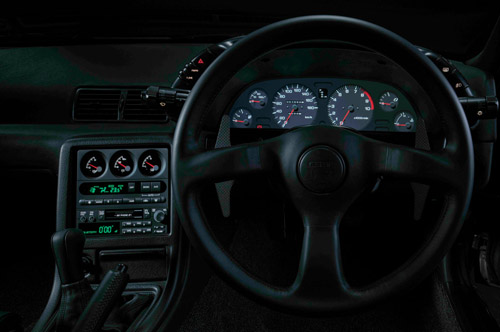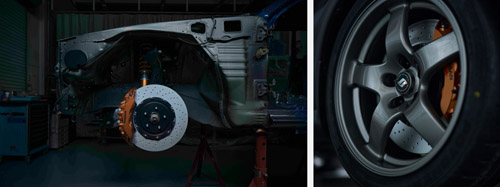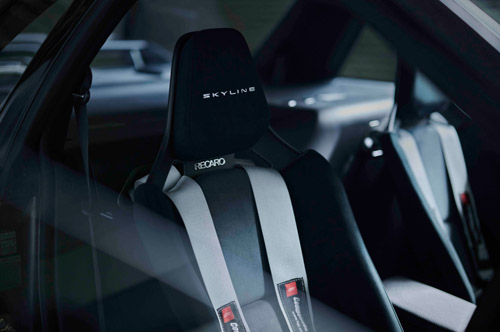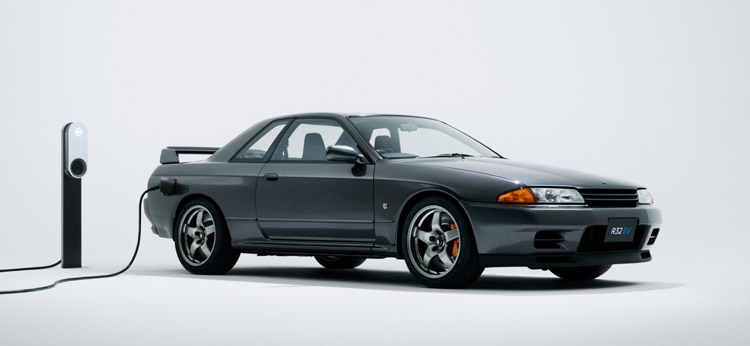About two weeks ago, I was driving along and spotted a right-hand-drive Nissan R35 GT-R – that is to say the most recent version.

But here’s the thing – it really isn’t that recent, which is why I was spotting it. In Canada we are, for the most part, allowed to import vehicles from other markets as long as they’re no less than 15 years old and since it was 2024 and the R35 GT-R debuted in 2009, it now fits that bill. What I was seeing was a Japanese Domestic Market version. I didn’t realize how old that car was but that’s not so hard to believe because the GT-R has always been so timeless. It has cult status like few other vehicles in the world this side of perhaps the Ford Mustang or Porsche 911. Indeed, when you inhabit that section of the enthusiast’s mind and space, model years really don’t matter.
Which brings us to the special GT-R featured here: the millions of GT-R fans out there will recognize it as an R32 model – which it is – but with one notable exception: under that famously tapering hood we find not a twin-turbo RB26DETT inline-six but one of two 160 kW EV motors. This is R32 EV and it’s not some passion project by some third party chap in a shed somewhere. In fact, it’s an effort from actual Nissan engineers – including Nissan EV powertrain guru Ryozo Hiraku — who love the GT-R and just wanted to see what they could do with one in the EV space. It seems that whatever the future holds for Nissan on the business front, they aren’t afraid to have a little fun.
To keep up the façade, the R32 EV looks almost a spitting image of the R32. Look more closely, however, and intriguing details start to emerge: the brakes are larger, and sourced from the R35 and while the wheels look like stock R32 items, they are in fact designed specifically to accommodate the larger brakes and measure 18 inches instead of the R32’s 16 inchers.

Of course since the original R32 was AWD, so to is this one although that’s achieved not by half shafts and differentials and so on but by an EV motor on each axles. Torque is rated at 250 pound-feet. Nissan insists that development is ongoing and more power is likely available, but in an effort to keep the R32 as original as possible, that torque figure matches that of the gas R32. The system’s 62 kW battery, meanwhile, replaces the rear seats and is borrowed from the Leaf Nismo RC02. Other interior changes include specialized Recaro front seats and a digital gauge cluster styled to look like the original’s analogue set.
The feather in the R32 EV’s cap when it comes to the drive, however, doesn’t really have anything to do with the power on-tap or even the specially-tuned suspension that comes fit with Ohlins dampers. In an effort to maintain a drive experience, Nissan’s engineers used the cabin’s speakers to pump in sound inspired by the original’s engine note and have even crafted a paddle-activated transmission that simulates the jolt felt when shifting gears.

It should come as no surprise that the R32 EV isn’t slated for production but you have to think: a lot of effort has gone in to building a real, working prototype that even provides a nod to driver involvement.
Now, they wouldn’t just let all that work go to waste…would they? A GT-R EV to be announced soon, perhaps? After all; Hyundai has proven with the Ioniq 5 N that an EV can act as a proper driver’s car. Chances are Nissan has taken all that to heart when it comes to developing the GT-R.



